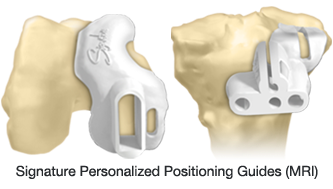Not all patients are candidates for partial knee replacement. Only
your orthopedic surgeon can tell you if you're a candidate for joint
replacement surgery, and if so, which implant is right for your
specific needs. You should discuss your condition and treatment
options with your surgeon. The Oxford®Partial Knee is intended for use
in individuals with osteoarthritis or avascular necrosis limited to
the medial compartment of the knee and is intended to be implanted
with bone cement. The Oxford®Knee is not indicated for use in the
lateral compartment. Potential risks include, but are not limited to,
loosening, dislocation, fracture, wear, and infection, any of which
can require additional surgery.
Zimmer Biomet is a manufacturer of orthopedic implants and does not
practice medicine. Only an orthopedic surgeon can determine what
treatment is appropriate. Individual results of total joint
replacement may vary. The life of any implant will depend on your
weight, age, activity level, and other factors. For more information
on risks, warnings, and possible adverse effects, see the Patient Risk
Information section found within ZimmerBiomet.com. Always ask your
doctor if you have any questions regarding your particular condition
or treatment options.
Oxford® and Signature™ are trademarks of Zimmer Biomet or its
subsidiaries unless otherwise indicated.


